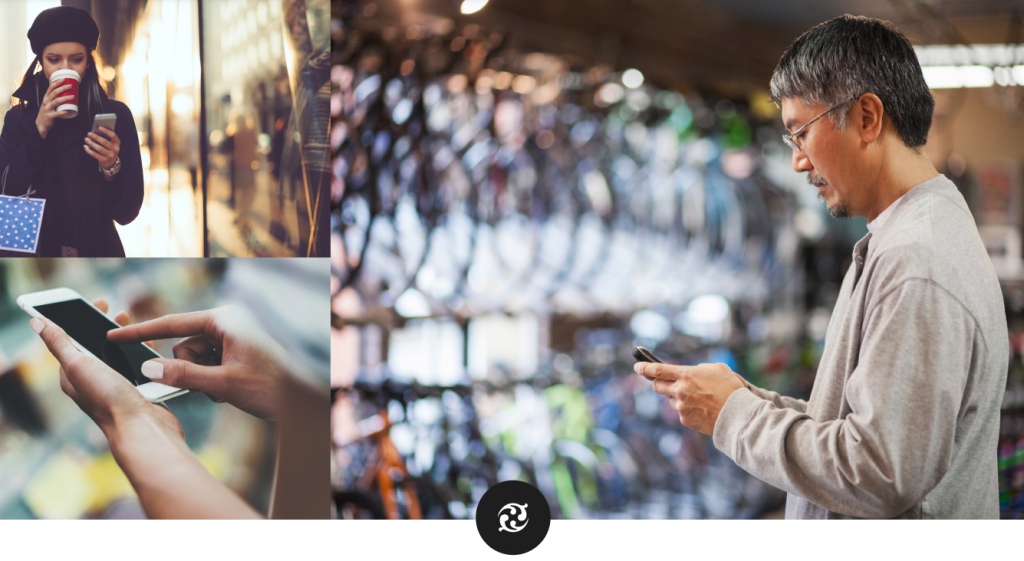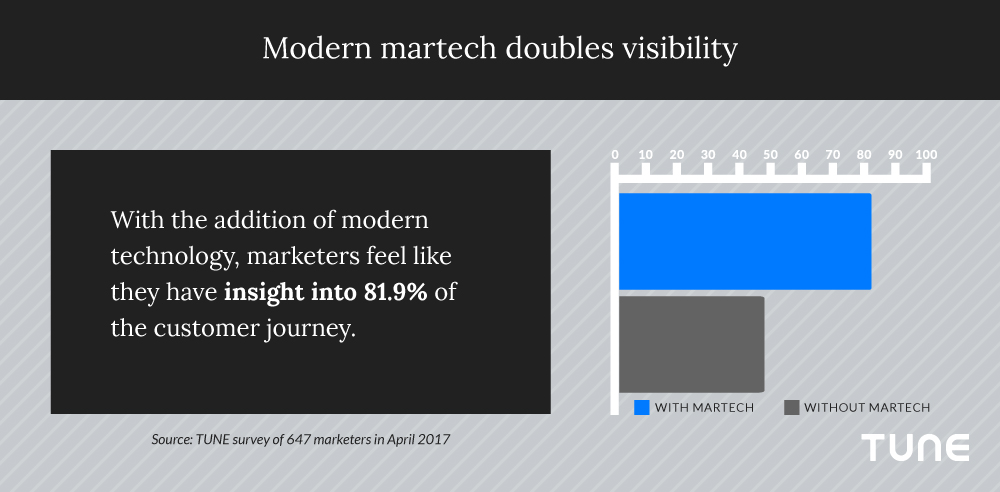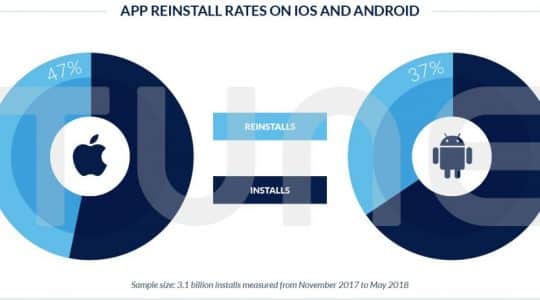
There’s a reason venture capitalists have dumped billions of dollars into marketing technology startups and contenders over the past five years.
Marketers need that technology run their campaigns, send their emails, build engaging mobile experiences, and … understand the customer journey.
This is part two of a five-part series on customer journeys in a #MobileBest world
Read part one, part three, or part four
Get the entire free report now
We surveyed 647 marketers about the value, technology, and problems with customer journeys. We also asked marketing influencers — including media, analysts, CMOs, and journalists — how customer journeys work, what’s wrong with them, and if marketers should even bother.
Technology shows marketers 2X more journey data points
Marketers have faith in the power of technology. Perhaps too much faith.
Over 600 marketers told TUNE that without modern marketing technology, less than half of the customer journey is visible. Via old-school methods like coupons, TV ratings, offer codes, in-store traffic statistics, phone calls, net promoter scores, and much more — some of which are still very valid — marketers believe that they have visibility into about 40.8% of the customer journey.
That seems optimistic, but that’s what marketers said.

With the addition of modern technology — cookies, traffic logs, IP address detectors, unique identifiers on mobile devices, social monitoring, web buzz monitoring, marketing automation systems — to tie it all together, marketers feel like they have insight into 81.85% of the customer journey.
Again, I think marketers might be buying the Brooklyn Bridge here, but the point is not exactly how much visibility martech offers, it’s how much increased visibility martech enables.
And yes, martech can do that via tracking on the web and in mobile, with varying degrees of success. But there are also methods that don’t involve tracking codes, cookies, unique device IDs or fingerprints, and so on.
How: Logging in on mobile web & mobile apps
One sure way to increase customer journey visibility is to be login-worthy, as discussed in the full report.
The customer journey doesn’t end at purchase: that’s in a sense the beginning. Getting the second purchase, and making a first-time customer a loyal repeat customer, is arguably more important than initial success.
And that can happen both on mobile web and mobile apps.
Mobile apps have advantages in user interface, capability, and usability. Mobile web has the advantage of ubiquity, a low barrier to entry — and one thing that brands often forget. If someone is logged in to your site or service on desktop, that often translates to them being logged in to your service on mobile web, thanks to people saving passwords in Chrome (which is tied to a Google account, not a specific device). Or, to similar technology on Mac OS X and iOS: Keychain.
In either case, logging in is easier, and therefore so is understanding your customers and your customers’ needs.
How: Smart products
Earlier we talked about the value of customers logging in. But it’s not always obvious from a customer perspective why they should sign up and log in.
That’s why it’s critical to design product experiences — aka customer experiences — in such a way that logging in generates obvious, instant, and massive value.
Think smart home devices, like Sonos.
Logging in is just part of the natural, normal, required, and obviously valuable customer experience. That means product registration is close to 100%, and that bridges the deadly retail gap between a brand and its customers: connecting end users with brands in a way that enables brands to deepen the relationship, improve the service, increase share of wallet, and increase likelihood of being the brand of preference after a natural product lifecycle.
In essence, it transforms a product into a service, and transforms a one-time-payment service into a subscription model.
No, it’s not necessarily a true subscription model — I don’t keep paying for my Sonos.
But, as I upgrade and add new components, Sonos benefits financially, driving a de facto SaaS model where in reality none exists. And, as all startups know, subscription revenue is worth double or triple one-time revenue, because the cost of customer acquisition is so low.
The question becomes: How can you design your product similarly?
“Driving customer experience in the ‘use’ cycle, particularly building the journey from use and mere satisfaction to love, loyalty and advocacy is most valuable. A company that can acquire customers but cannot retain them or encourage positive word of mouth will always struggle. Meanwhile, a company that can retain and grow customers that share with others can improve not only its marketing efficiency but also its bottom line. Brands like Starbucks, which is the second largest restaurant brand in the nation despite spending less than half of the other top-five restaurant chains, demonstrates how loyalty and advocacy converts into marketing and business success.”
– Augie Ray, Research Director covering customer experience for marketing leaders, Gartner Research
TL;DR?
Good customer experience is good marketing
This has been part two of a five-part series on customer journeys in a #MobileBest world
Read part one
Get the entire free report now
The topic next time in part three?
Mobile makes journey mapping simple: Follow Amazon’s lead
Author
Before acting as a mobile economist for TUNE, John built the VB Insight research team at VentureBeat and managed teams creating software for partners like Intel and Disney. In addition, he led technical teams, built social sites and mobile apps, and consulted on mobile, social, and IoT. In 2014, he was named to Folio's top 100 of the media industry's "most innovative entrepreneurs and market shaker-uppers." John lives in British Columbia, Canada with his family, where he coaches baseball and hockey, though not at the same time.




[…] In fact, it’s so critical that marketers tell us that better customer journey visibility would improve their marketing ROI by a staggering […]
[…] is part four of a five-part series on customer journeys in a #MobileBest world Read part one, part two, and part three Get the entire free report […]